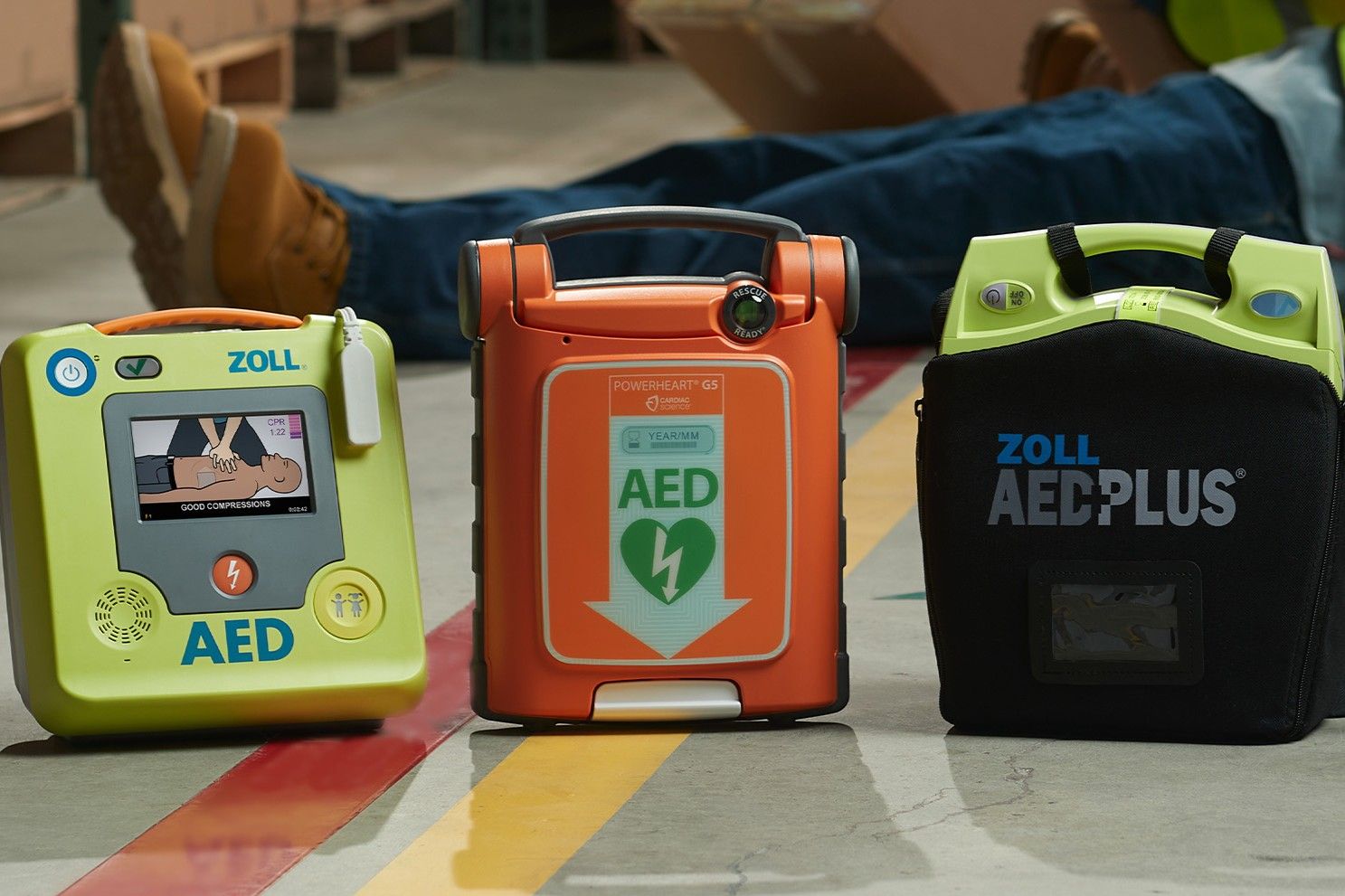
What is an Automated External Defibrillator (AED)? An Automated External Defibrillator (AED) is a portable device that checks the heart's rhythm and can send an electric shock to the heart to try to restore a normal rhythm. AEDs are used to treat sudden cardiac arrest (SCA), a condition where the heart suddenly and unexpectedly stops beating. These devices are designed to be simple to use, even for people without medical training. They provide clear, step-by-step voice instructions and can be found in many public places like schools, airports, and sports arenas. Having an AED nearby can significantly increase the chances of survival for someone experiencing SCA.
What is an Automated External Defibrillator (AED)?
An Automated External Defibrillator (AED) is a portable device used to treat sudden cardiac arrest (SCA). It analyzes the heart's rhythm and, if necessary, delivers an electric shock to help the heart re-establish an effective rhythm.
- AEDs are designed to be used by anyone, even those without medical training.
- The device provides step-by-step voice instructions to guide users through the process.
- AEDs can be found in many public places like airports, schools, and shopping malls.
- The first AED was developed in the 1960s by Dr. Frank Pantridge, known as the "Father of Emergency Medicine."
How Does an AED Work?
Understanding how an AED functions can demystify its life-saving capabilities. Here are some key points:
- When turned on, the AED instructs the user to attach electrode pads to the patient's chest.
- The device then analyzes the heart's rhythm to determine if a shock is needed.
- If a shock is advised, the AED will prompt the user to press a button to deliver the shock.
- The shock aims to stop the irregular heart rhythm, allowing the heart to reset to a normal rhythm.
Why Are AEDs Important?
AEDs play a crucial role in increasing the survival rate of sudden cardiac arrest victims. Here’s why:
- Sudden cardiac arrest is a leading cause of death, with over 350,000 cases annually in the U.S. alone.
- The survival rate decreases by 7-10% for every minute without defibrillation.
- Immediate use of an AED can double or triple the chances of survival.
- AEDs are part of the "Chain of Survival," which includes early recognition, CPR, defibrillation, and advanced care.
Where Can You Find AEDs?
Knowing where to locate an AED can make a significant difference in an emergency. Common locations include:
- Many schools have AEDs as part of their emergency preparedness plans.
- Airports and train stations often have AEDs in visible, accessible locations.
- Gyms and sports facilities frequently install AEDs due to the physical exertion involved.
- Large office buildings and factories may also have AEDs on-site.
Who Can Use an AED?
One of the most remarkable aspects of AEDs is their accessibility. Here’s who can use them:
- AEDs are designed for use by laypersons with minimal training.
- Many workplaces offer AED training as part of their first aid courses.
- Some states in the U.S. require AED training for high school graduation.
- Good Samaritan laws protect those who use AEDs in an emergency from legal liability.
How to Maintain an AED?
Proper maintenance ensures that an AED is ready to use when needed. Key maintenance tips include:
- Regularly check the battery and electrode pad expiration dates.
- Perform routine inspections to ensure the device is in good working condition.
- Keep the AED in a visible, accessible location.
- Replace any used or expired components immediately.
Interesting Facts About AEDs
Here are some lesser-known yet fascinating facts about AEDs:
- Some AEDs can provide real-time feedback on the quality of CPR being performed.
- Modern AEDs can store data from the incident, which can be useful for medical professionals.
- AEDs are designed to only deliver a shock if it's necessary, minimizing the risk of accidental harm.
- The cost of an AED can range from $1,200 to $2,500, making them a valuable yet affordable life-saving tool.
The Power of AEDs in Saving Lives
Automated external defibrillators (AEDs) are game-changers in emergency situations. These devices can mean the difference between life and death during sudden cardiac arrest. Easy to use, AEDs guide users with clear instructions, making them accessible even to those without medical training.
Having AEDs in public places like schools, gyms, and airports increases the chances of survival for cardiac arrest victims. Quick action is crucial, and AEDs provide that immediate response needed before professional help arrives.
Understanding how AEDs work and their importance can empower more people to act confidently in emergencies. By spreading awareness and ensuring AEDs are readily available, we can all contribute to saving lives.
So, next time you see an AED, remember its potential to save a life. It’s a small device with a massive impact.
Was this page helpful?
Our commitment to delivering trustworthy and engaging content is at the heart of what we do. Each fact on our site is contributed by real users like you, bringing a wealth of diverse insights and information. To ensure the highest standards of accuracy and reliability, our dedicated editors meticulously review each submission. This process guarantees that the facts we share are not only fascinating but also credible. Trust in our commitment to quality and authenticity as you explore and learn with us.
